This collection of fun skeletal system activities for kids includes online lessons, fun facts, and hands-on projects.
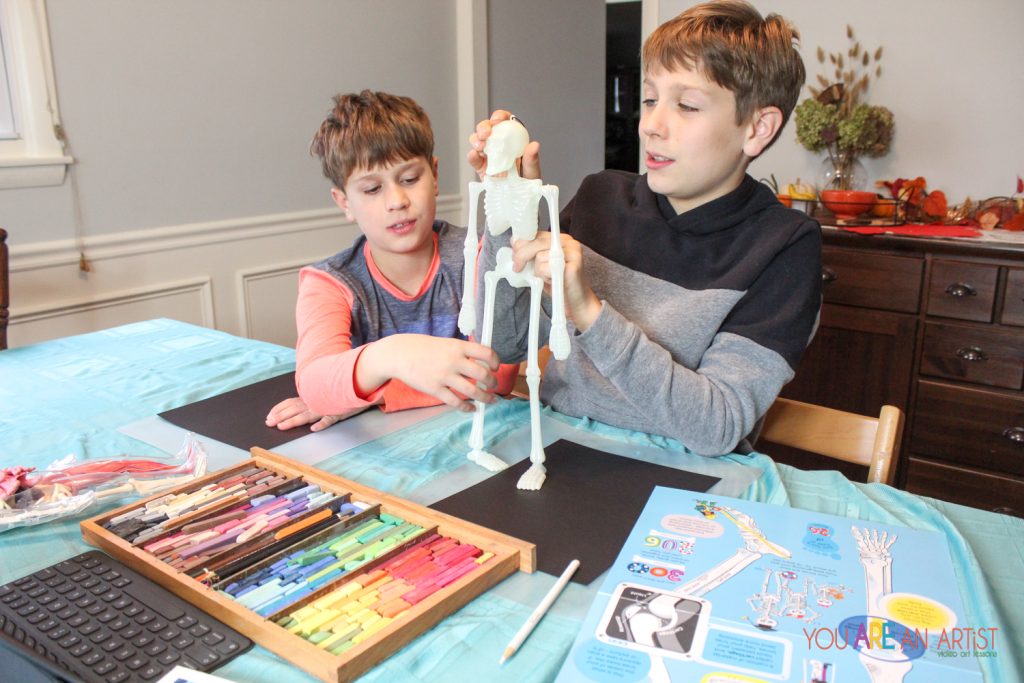
Them bones, them bones, them dry bones! Kids love to know about “them bones!” Don’t we all want to know more about what holds us up?
But first, a skeleton joke (because starting learning with a laugh always helps!):
Why are skeletons so calm?
Because nothing gets under their skin.
If trying to teach science gets under your skin, you are not alone! I can’t tell you how many times my homeschool friends tell me I am so lucky to be married to a science teacher so he can handle all the science classes. Well, the truth is, you don’t need to know everything to inspire your children’s learning. You just need some great resources. When it comes to the intricate skeletal system, Nana has a video art lesson just for drawing “them bones!”
Hands-On Learning Activities In Your Homeschool
Although there are 206 bones in the adult human skeleton, it is not hard to learn the major bones in our bodies. For one, so many bones come in pairs or multiples!
For another, Nana’s video art lessons make drawing and labeling a human skeleton fun and engaging. We especially loved switching to black paper for this lesson, which made the finished drawing more striking.
Another skeleton joke:
Why did the skeleton have to goto church to play music?
They don’t have any organs!
Although a skeleton has no organs, there are chalk pastel lessons on some of the organs in our body! (more on that down below!) But in the human skeleton lesson, there are no organs at all, just good, strong bones.
As with every chalk pastel lesson we use in our homeschool, I adore how the boys never tire of this type of learning. Using art to learn is such an interactive teaching strategy.
As kids draw the hip bones connected to the thigh bones, and so on, they are involving
- their ears (listening to Nana),
- their eyes (watching her draw and then copying),
- their hands (drawing),
- and the part of the brain that creates mirror images, because the skeleton has many mirrored shapes!
Using all the senses like this increases comprehension. Kids will retain this learning longer, because so many senses were at work in creating a picture they can label and study!
Hands on learning in your homeschool really is the way to make learning about the human body fun, relaxed, and keep all the information in their lovely round skulls (which is a single large bone! Fun Fact: the skull has one moveable part, which is the mandible).
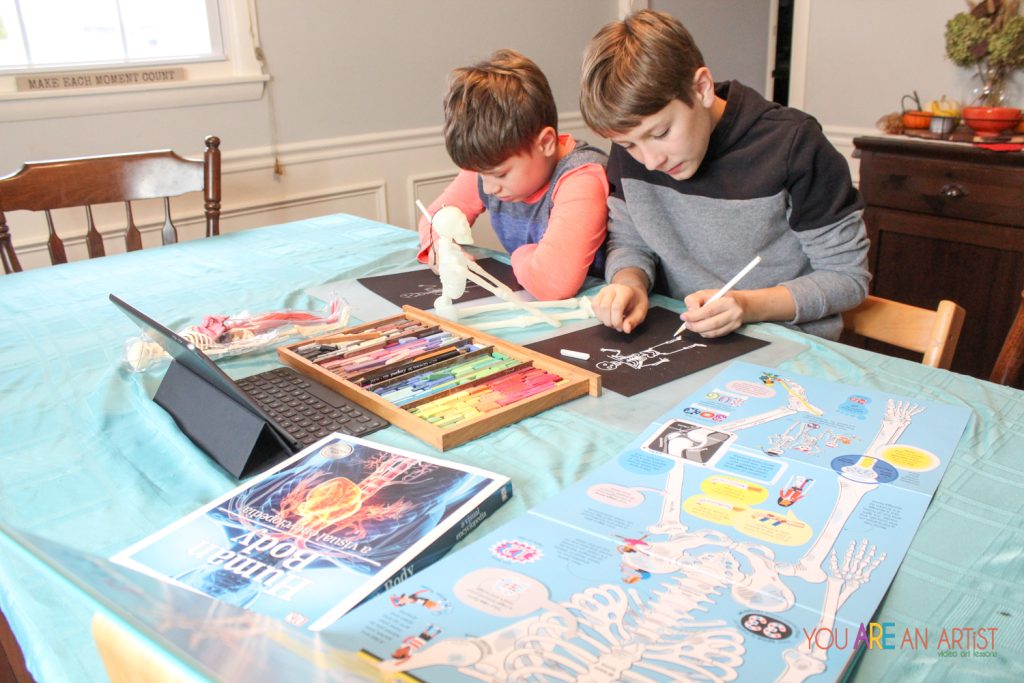
Learning About The Skeletal System
But why learn about the human body anyway? Adding human anatomy study into your homeschool is so important for giving kids a deeper understanding of their own bodies.
When kids learn how intricately the skeleton is designed (there is only ONE bone that is not connected to another bone!), they will develop a sense of wonder at their own body!
Learning to appreciate the design of the human skeleton will help kids want to take care of their bodies. They need to know why it’s important to eat foods that feed their bones, or how exercise can strengthen their bones. Perhaps those teens will even want to practice good posture, so they can keep their bones functioning properly!
Plus, human anatomy is part of a well-rounded science education. In science, we learn about the far reaches of space, and the creatures of the deep sea, or how the water cycles works. Yet we live and move in these amazing bodies every second of the day, so we should definitely spend a good amount of time learning the science of how our body works!
After all, without our amazing skeleton, we couldn’t draw with chalk pastels, kick a soccer ball, or play musical instruments!
What’s a skeleton’s favorite musical instrument?
The trom-bone.
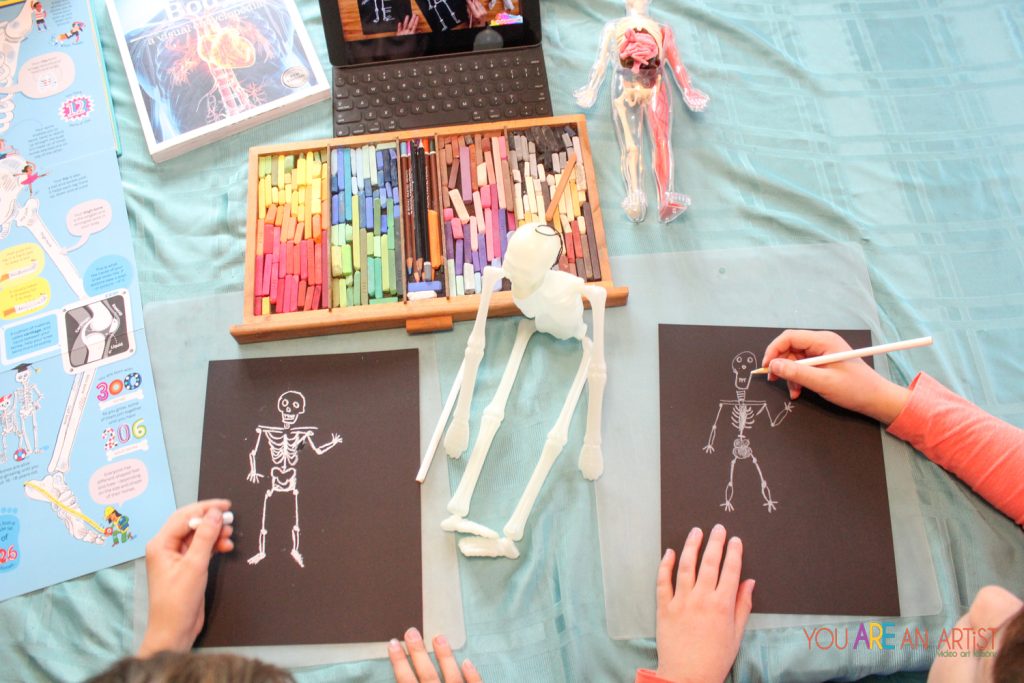
Skeletal System Activities For Kids
I’ve done a number of skeleton lessons and activities with my kids over the years. We’ve built skeletons out of Q-tips, drawn diagrams of the inside layers of bones, and done experiments to see what chemicals can soften bones (chicken bones, that is!).
But this was our first time drawing a human skeleton with Nana. This art lesson was perfect for both my fifth grader and seventh grader. I love how students in various grades can adapt this lesson to their level.
For instance, my fifth grader drew the entire skeleton and then labeled a portion of the skeleton. Younger students might find they need a little extra time to write all those bone names down. That is okay! You can take as much time as you need once the lesson is done to learn the names of each bone. We can either go back and label the rest of the skeleton, or maybe focus on learning just the portion he labeled.
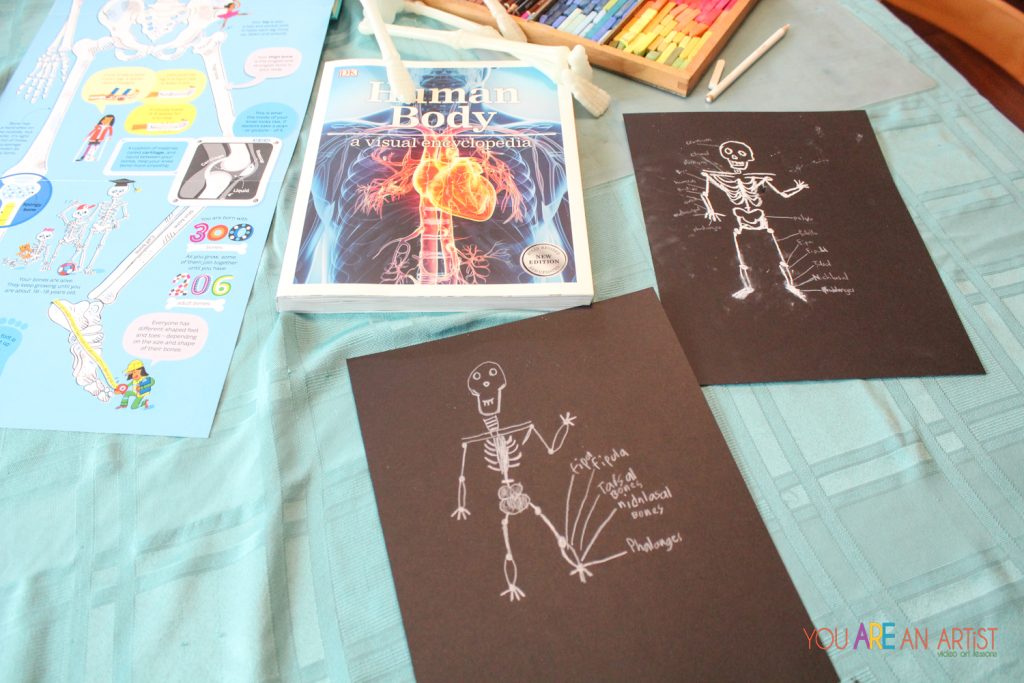
My seventh grader labeled the entire skeleton right after completing the drawing. This is the beauty of whole family learning with chalk pastel lessons: each student can work to their ability level, and the whole family comes away learning more about the skeleton no matter what!
I appreciated how Nana’s chalk pastel skeleton lesson covers both the visual aspect of learning about the skeleton (because it’s just FUN to know how to draw a cool skeleton!), as well as the vocabulary element.
Naming parts of a skeleton is great for building vocabulary. It’s useful know body part names, so you can speak articulately when visiting the doctor. I like how Nana sometimes adds in the “laymen’s term” for some of the bones, discussing the patella as also being called the “kneecap.”
Besides drawing a human skeleton, you can learn so much more about the human body with Nana’s other anatomy lessons.
Diagram of an Ear
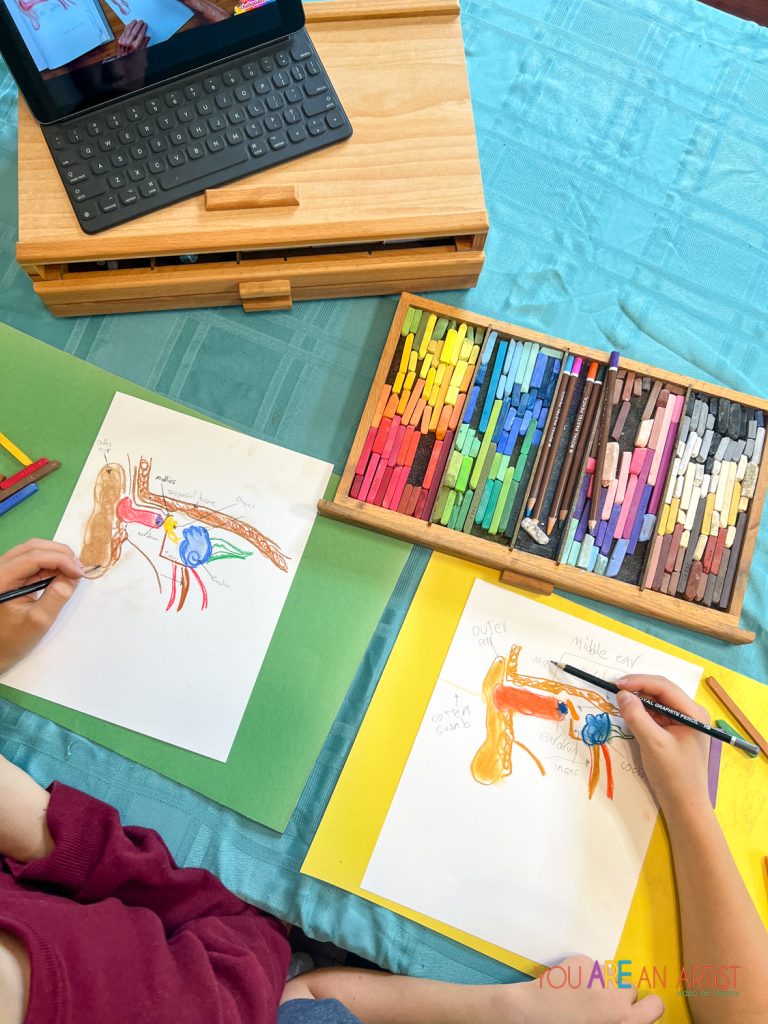
This colorful lesson teaches kids the three main sections of the human ear. The ear is so intricate and students will learn how beautifully our ear is designed.
Diagram of a Tooth
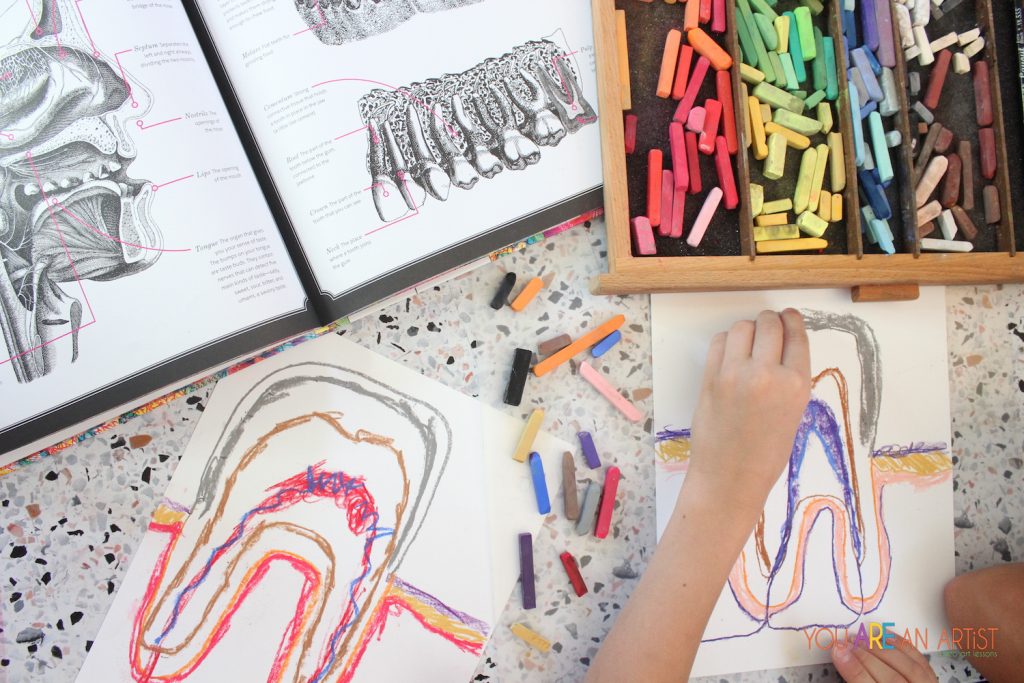
Simple to draw, this lesson shows kids all the layers of the tooth. We loved how the tooth is diagrammed in vivid colors to show all the parts of the tooth and gums! Nana’s humor really comes through in this lesson as she discusses each part of the tooth. Maybe it will inspire more dental hygiene as well!
Diagram of the Heart
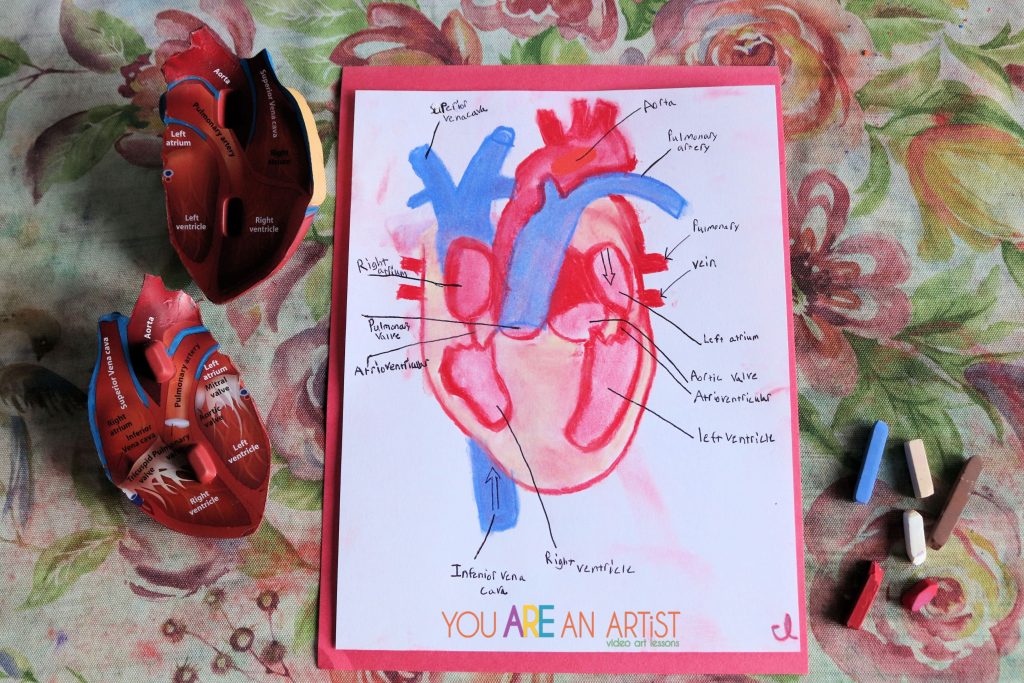
This intricate lesson doesn’t shy away from detail. Young students will draw a beautiful human heart kids can admire and show off! All the parts are labeled, and this lesson would make a wonderful jumping off point for further study.
Diagram of an Eye
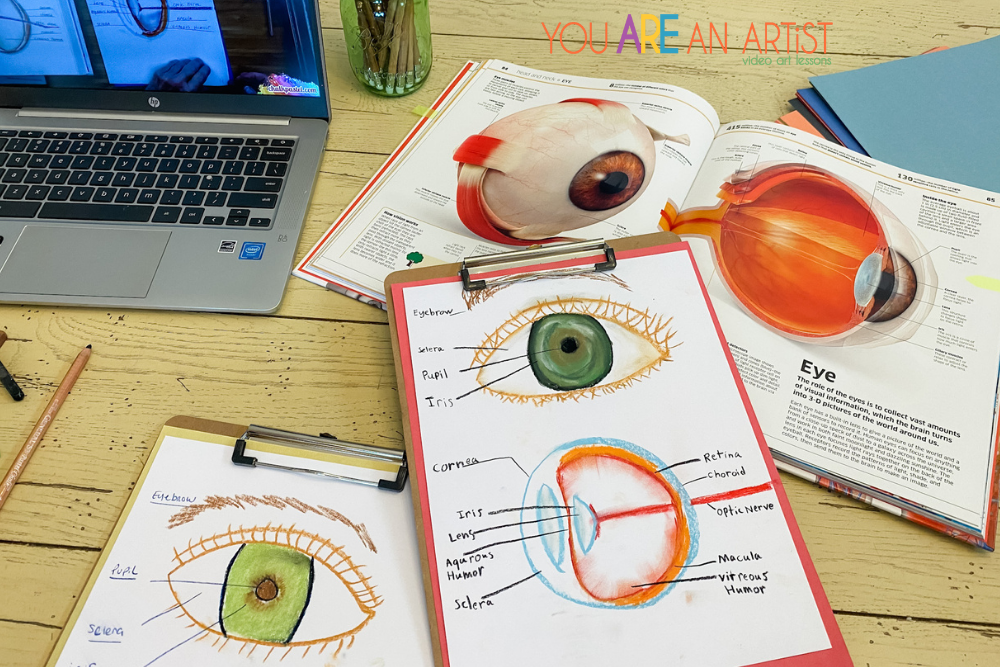
The eye looks so simple, but has so many parts we cannot see! Nana helps students draw both the outside of the eye and the inner workings of the eye. Plus, students can color their eye to match their own eye color.
Each of these human anatomy lessons involves a good amount of labeling, just like scientists do! These lessons could work at any point in your human anatomy studies: They are perfect for a starting point for study. Spend your unit studying more about each part you labeled.
Another way you could include these lessons is by having students complete their drawings in a science journal (because labeling a diagram is key to scientific research!).
Or, make these lessons a final capstone to a unit on human anatomy. Let students use their drawing to explain what they have learned about human anatomy.
More Resources For Hands-On Science In Your Homeschool
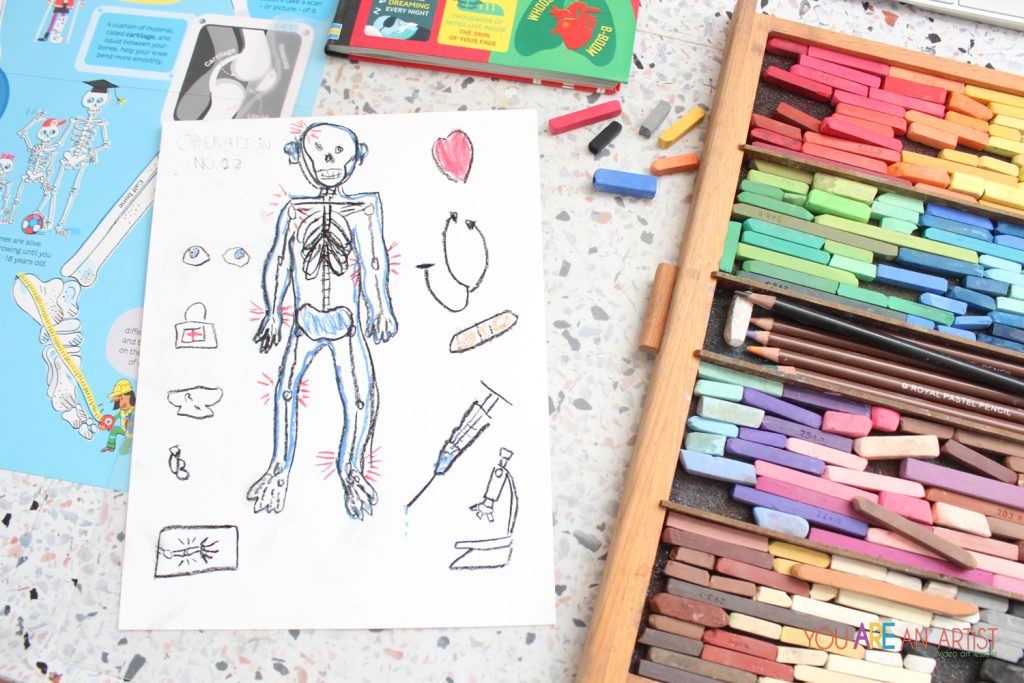
In addition to the human skeleton lesson, the boys also completed the Advances in Medicine lesson. This lesson has kids draw another skeleton, but with extra fun details on the skeleton, and Nana includes some historical references in the lesson.
Hands on Science doesn’t stop with the human body! Nana has already created delightful lessons on cells, bacterium, as well as many other science topics.
Do you have a space lover? They can draw all the planets in the solar system lessons, the moon missions, and all the exciting aspects of space exploration.
Nature lovers will enjoy any of the backyard nature art lessons, which include many animals. Or, try the many backyard birds lessons. How about a frog cycle lesson for spring?
For STEAM studies, paint pictures of famous inventors, and study their lives and inventions from telephones to electricity, steam engines and airplanes.
There is science in everything we see and do! And here’s another skeleton joke for you:
Why didn’t the skeleton go to the scary movie?
He didn’t have the guts!
Sometimes, designing a program of science study for our kids feels like a scary movie. But learning about science is NOT scary at all with these wonderful chalk pastel art lessons to support your studies, and the delightful and energetic Nana leading your children through learning with art.
Enjoy The Ultimate List of Human Anatomy Art Activities for Hands On Science to browse them all!
Don’t be afraid to blend art and science for a colorful hands-on experience for everyone. The human skeleton and our anatomy is a wonderful place to begin.
Fill your homeschool with hands-on learning in every subject with a You ARE an Artist Clubhouse membership. This way you’ll have full access to all the video art lessons all the time! No matter what topic you’re studying, be it history, science, music, or literature, you can find a coordinating lesson to engage your learners. Plus, You ARE an Artist is always adding in valuable curriculum workbooks to give you fast facts, lesson planners, and more for your homeschool.
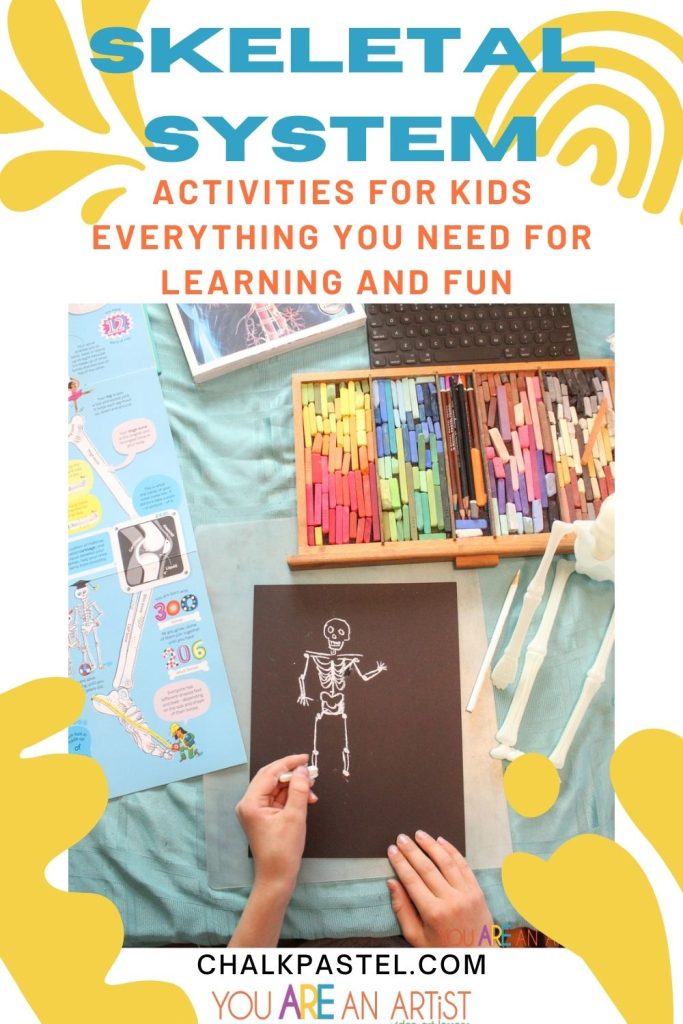

Julie is a teacher, writer and homeschool mom. Her blog Happy Strong Home shares encouragement for cherishing children, enjoying motherhood, and growing strong families. Discover homeschool resources, natural living tips, and family activity ideas. Julie has been featured on Million Praying Moms, The Old Schoolhouse Magazine, and the Melissa and Doug blog. She offers writing workshops and a “homeschool neighborhood” community to support parents in their homeschool adventures. Find Julie on Instagram to be the first to know when new workshops and community events are available.
